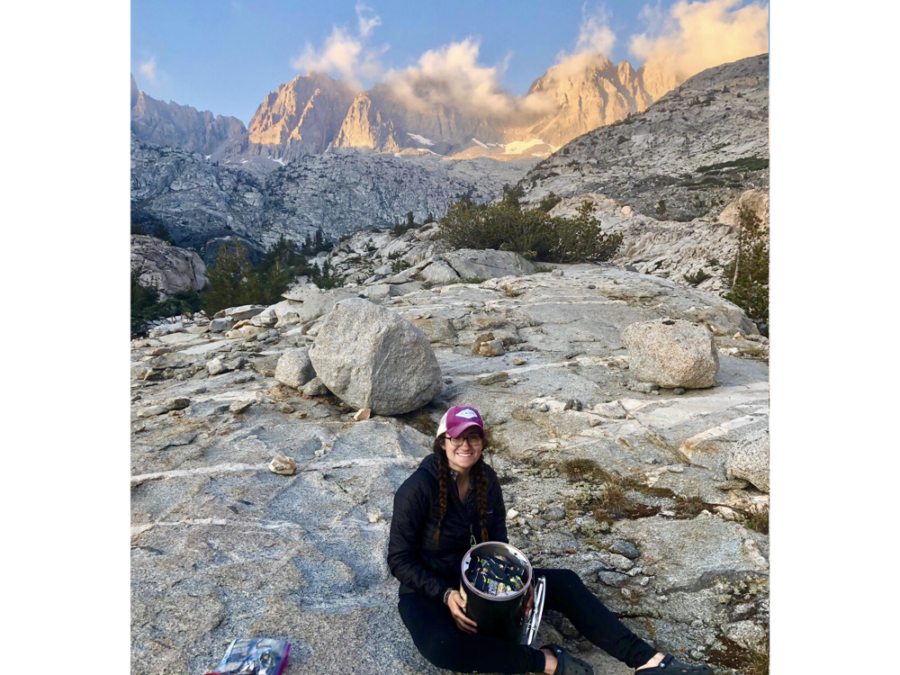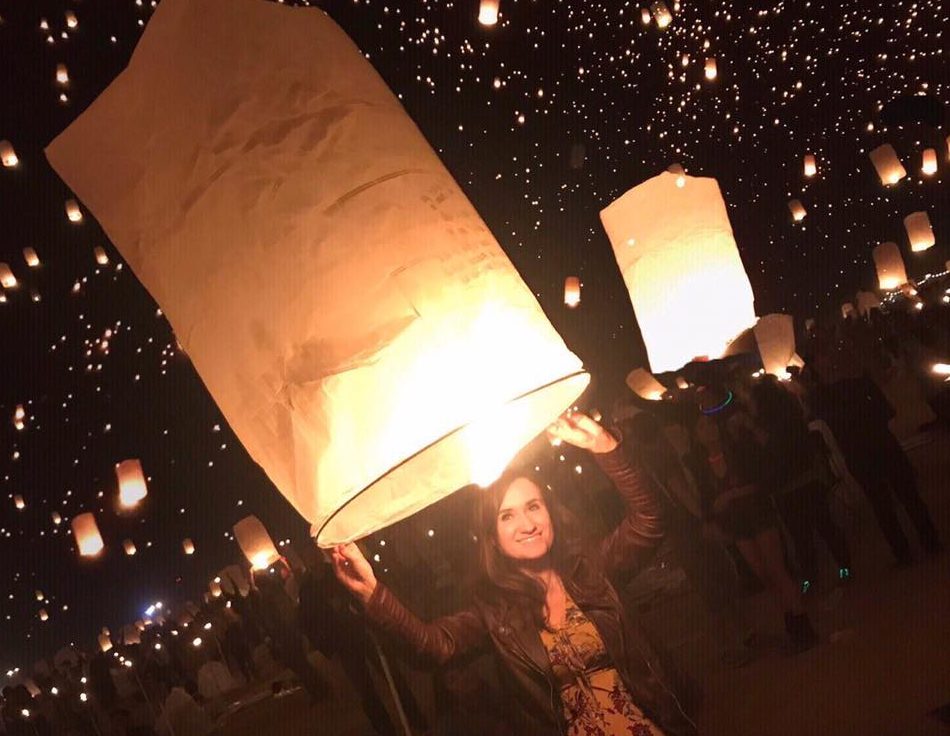Some people eat to hike. I hike to eat. Enter: meal planning.
When it came to planning meals for the John Muir Trail, I knew I had to give myself enough nutritious fuel to complete the journey AND enough lip-smackin’ variety to actually enjoy it.
Enter…THE ULTIMATE SPREADSHEET O’ SNACKS!
Yes, I made an Excel spreadsheet of all the snacks (and breakfasts, lunches, and dinners) I packed for the trail. I included calorie counts for each item, making sure I packed myself an average 2400 calories per day. (See below for how I arrived at that specific calorie goal and how you can calculate your own unique calorie needs.)
Download my full spreadsheet here! And keep reading for my favorite meals, bear canister packing strategies, and what I’d do differently next time.
My John Muir Trail Meal Plan
I aimed for 2400 calories per day of hiking.
~1500 of those calories came from on-trail snacks and stoveless lunches, pre-portioned into one grab bag (a one-gallon Ziplock) per day.
The rest came from breakfast and dinner (~400 calories each. All of my breakfasts and dinners were pre-made dehydrated backpacking meals. These were usually split into two portions and repackaged into quart-sized freezer Ziplocks.
Each dinner included a soup course, both to rehydrate the body after a long day of hiking and to have something comforting to hold/eat while the main dinner meal rehydrated. Most days also included an optional “nightcap” of hot cocoa or apple cider, and every morning included at least one non-optional cup of coffee.
Note: while I’ve dabbled in making my own homemade dehydrated meals before, I chose to pack mostly pre-packaged meals for my JMT hike. This was 100% a time-saving measure. In summer 2019 I was already moving out of California, starting my freelance writing business, re-launching this blog, leading trips for Trail Mavens, maintaining a long-distance relationship, looking for housing in Colorado, and trying to have a little fun, too…so I knew I wouldn’t have time to make my own meals on top of everything else.
That said, dehydrating your own backpacking meals is cheaper, less wasteful, and easier to customize than buying pre-made. If you’re interested in making your own meals, The Hungry Spork is a great resource!
Calculating Your Calorie Needs
My meal plan aimed for 2400 calories per day. That’s about a thousand calories more than I typically eat. But since I averaged ~14 miles a day with ~3,000 feet of elevation gain/~3000 feet of loss each day, I was still burning more calories than I consumed.
Your exact calorie needs depend on a variety of factors, including your…
– Height, weight, and age
– Prior physical fitness
– Pack weight
– Intensity/duration of trail time
– Inherited metabolism
– Altitude, illnesses, and other factors
First, calculate your basal metabolic rate, or the calories you need to maintain basic bodily functions before exercise. You can estimate this using one of the many free calculators available online. (Mine is ~1,300 calories/day.)
Then, add 200-500 calories per hour of activity. Backpacker and Outside both have hiker calorie calculators that include factors like terrain and pack weight, though both estimated that I pack way more calories than I actually did.
For reference, I hiked the John Muir Trail as a 5’2″, 120-pound 28 year-old with a good level of cardio fitness, not a lot of muscle mass, and a slow-to-average metabolism for my age. After averaging a few different calorie calculators, I thought I might need about ~3,200 calories/day for this kind of trip. But based on previous experience, I knew that was way too much!
I did a few overnight shakedown trips of similar mileage to see how much I ate —climbing Mount Whitney for the second time was actually one of those trips— and realized that I was happiest at around ~2,000 calories/day. Since I knew the JMT would be my longest, hardest hike to date, I threw in 400 more calories per day in case “hiker hunger” hit.
I didn’t weigh myself before/after the hike, but my hip belt got at least an inch tighter over the course of my 16-day trek. Still, I never felt hungry or weak. I only had to force myself to eat once, when altitude left me feeling nauseous, but I ate anyway because I knew I needed to.
By the end of the trail, I had about 3 days’ worth of food left — a couple extra meals and a random assortment of the snacks I was sick of. I don’t regret carrying a little extra as insurance, and was even able to feed some hungry, underprepared PCTers we met along the way.
It’s better to overpack than underpack, within reason. But the best way to avoid either extreme is to go on long shakedown hikes and see how much you eat.
Favorite Backpacking Breakfasts
I wrote a whole blog post for Wild Zora about my favorite backpacking breakfasts — including a few of their meals, like the Cliffside Coconut Berry bowl. Check it out here!
TL;DR, some of my favorite backpacking breakfasts are:








Favorite Stoveless Backpacking Snacks & Lunches
All my mid-day meals were cold (or “trail temperature”) so I wouldn’t have to bust out my JetBoil on the trail.
I packed a yummy grab bag o’ snacks each day, adding up to 1,500 calories each. I tried to mix up the tastes and textures, with at least one tuna or Spam packet, a jerky, a chocolate treat, a bag of gummies, something crunchy like seeds or nuts and something fatty like almond butter each day.
My favorite snacks/lunches include:











Favorite Backpacking Dinners
To save money, I bought the 2-serving size of most of my dinners and split it in half. (Other people might want both servings for one meal.)
My favorite dinners include:









More Resources for JMT Meal Planning
If you’re looking to deep-dive into the world of homemade backpacking meals, Inga Aksamit’s The Hungry Spork is your bible.
I also like Inga’s Facebook group Healthy Gourmet Backpacking Food, as well as the inspiring and informative Dehydrating Divas & Dudes. For general trail talk, including meals, I loved Ladies of the JMT and John Muir Trail Hikers (Your Year).
How to Fit More Food in a Bear Canister
Squeezing all your food and smellies in your bear canister is a very frustrating, very important game of Tetris. After plenty of trial and error, here’s how I fit 9.5 days of food (plus toiletries!) in my Bearikade Blazer.
– Repackage all dehydrated meals into quart-sized Ziplock freezer bags. You can pour hot water directly into the bags to rehydrate later! (Just make sure you get the freezer kind, which are a thicker plastic that can take the heat.)
– Place tortillas flat at the very bottom of the empty canister
– Line the sides of the canister with flat foil packets of tuna and Spam
– Squeeze extra air out of Ziplocks, roll them tightly, and place them vertically in the center
– Slide flat snacks, like jerky bars, fruit leather, and instant coffee, around the sides until the can is completely stuffed
– Toss bulky snacks, like Sport Beans and granola packets, on top
– Start eating!
While it was annoying the first few nights to dump out all my food at camp and re-arrange, I only had to re-Tetris a few times until I’d eaten enough to be less strategic about packing.
If you don’t own a bear canister, you can also rent the larger size of the Bearikade, the Expedition, for $3.30 per day — $6/day with their 45% discount for long thru-hikes. (I decided to splurge and purchase mine because I often hike where canisters are required.)
What I’d Do Differently Next Time
As space-saving as the freezer bag trick is, I do feel a little guilty about all that plastic waste. I love rehydrating food in silicone Stasher bags for shorter backpacking trips, but just didn’t want to deal with cleaning it out every night for so many nights on the trail. (And I needed to repackage the meals anyway to fit enough food in my bear canister.)
Considering I went 16 days without taking hot showers, driving anywhere, using electricity, or buying anything, I’ll give myself a little grace for all those plastic Ziplocks. 🙂
I packed the right amount of food, but wish I’d packed even more variety. By the end of the trip I was sick of mushy foods like tuna and Spam, which my trail buddies thankfully traded me for crunchy things like Fritos and Oreos.
Our trail mates Christy and David went fully stoveless and packed mostly homemade dehydrated meals, which looked delicious. Next backpacking season I’d like to make more of my own, too, though going stoveless doesn’t appeal to me. (A hot cup of coffee with a view is one of my favorite on-trail treasures.) David packed instant chocolate pudding for dessert nearly every day, a genius idea I’m stealing on my next trip.
Overall, though, I’m super happy with my food choices. The John Muir Trail left me hungry for more. 🙂
Questions about what I ate on JMT or the JMT in general? What delicious foods did I miss?? Let me know below!
Pin this for later:



5 Comments
Leave your reply.